About footnotes in books
UPD: Baseline is this: once the footnotes are read anyway, then why not move them closer to the main locale.
I am reading now one book about convenience on sites. Reasonable in content, the publication is full of familiar book details, which I, nevertheless, constantly stumble - these are footnotes.
"Footnote - placed at the bottom of the page note, bibliographic reference, translation of foreign language text associated with the main text of the footnote mark".
')
Classic implementation in the national tradition:
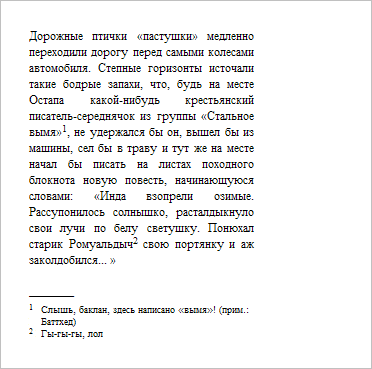
Distraction from the main text slows down reading, The “thread of knowledge” is often torn and it has to be restored by running back and forth with my eyes, to look for a place from where I came; A chapter is already harder to read on “single breath” - this is if you refer to footnotes as references to them appear in the text. In that scenario, when theuser reader misses tsiferki 1 2 3 and then decodes them all in a crowd, he manages to read without hesitation only a page of text (the page is not a semantic unit), and from the restoration of links (which footnote to which place in the text ) he is still not spared.
All this I experienced for myself. Sorry I do not know how to measure the level of frustration :-))
But maybe no one reads the footnotes? (And therefore they can be arbitrarily inconvenient.) Then why are they at all? :-) Yes, and the survey of the reading public has shown that they are not deprived of attention:
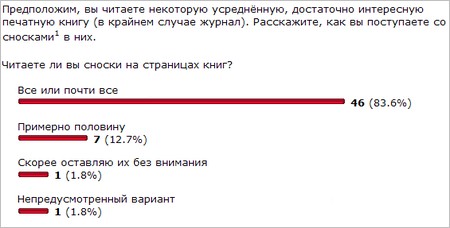
55 brutal can not be wrong
I want to note that I am talking mainly about footnotes, notes. Translations arranged in this way may be very relevant, and bibliographic links simply cannot be otherwise. Yes, and other exceptions can remember ...
Move the secondary text closer to the main one - to the fields, so that it is easier to find the connections.
It is even better to build the text in such a way that you simply did not have to do footnotes (it is still possible to differentiate the secondary text from the main one by using other methods, and the child will be next to the mother.) And new Internet traditions contribute to this a lot - footnote cellars are still possible there, but the environment itself does not contribute to this practice (there is no pagination and there are hyperlinks.)
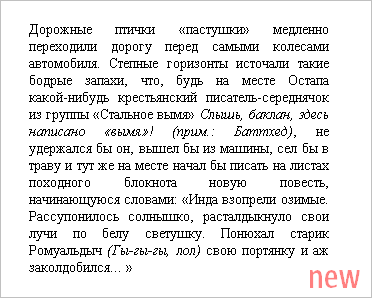
UPD: "screenshot" of last thought. yo!
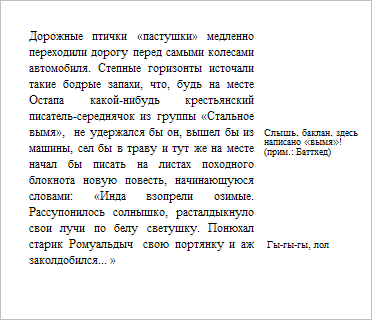
"Nearer! - hissed Kaa. "
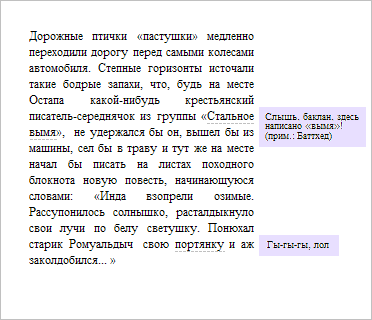
The bonds grew stronger ...
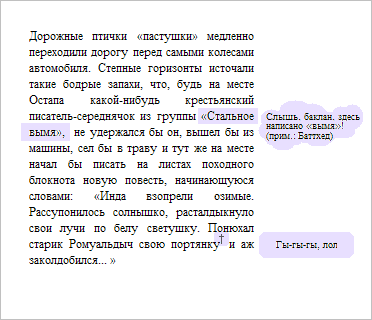
... growing stronger.

Footnote-inset not linked with specific words in a paragraph.
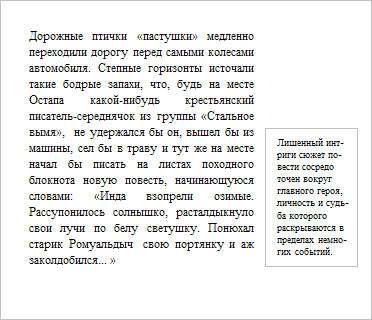
She is; the author dreamed of paying attention to her at the end.
What for? It remains a mystery.
For an example, Frederick Brooks refers only to books, there are simply no footnotes-notes - progressively. In the Russian edition of Jacob Nielsen, the usual footnotes at the bottom are quite a bit and all of them are on behalf of the translator, all the author's additions are written in the margins and do not have a rigid reference to the text. In general, what's going on in this regard with the western printers is not very clear to me, but it seems that the local guys are generally more comfortable :-).
I am reading now one book about convenience on sites. Reasonable in content, the publication is full of familiar book details, which I, nevertheless, constantly stumble - these are footnotes.
"Footnote - placed at the bottom of the page note, bibliographic reference, translation of foreign language text associated with the main text of the footnote mark".
')
Classic implementation in the national tradition:

What is wrong with them?
Distraction from the main text slows down reading, The “thread of knowledge” is often torn and it has to be restored by running back and forth with my eyes, to look for a place from where I came; A chapter is already harder to read on “single breath” - this is if you refer to footnotes as references to them appear in the text. In that scenario, when the
All this I experienced for myself. Sorry I do not know how to measure the level of frustration :-))
But maybe no one reads the footnotes? (And therefore they can be arbitrarily inconvenient.) Then why are they at all? :-) Yes, and the survey of the reading public has shown that they are not deprived of attention:

55 brutal can not be wrong
I want to note that I am talking mainly about footnotes, notes. Translations arranged in this way may be very relevant, and bibliographic links simply cannot be otherwise. Yes, and other exceptions can remember ...
What to do?
Move the secondary text closer to the main one - to the fields, so that it is easier to find the connections.
It is even better to build the text in such a way that you simply did not have to do footnotes (it is still possible to differentiate the secondary text from the main one by using other methods, and the child will be next to the mother.) And new Internet traditions contribute to this a lot - footnote cellars are still possible there, but the environment itself does not contribute to this practice (there is no pagination and there are hyperlinks.)

UPD: "screenshot" of last thought. yo!

"Nearer! - hissed Kaa. "

The bonds grew stronger ...

... growing stronger.

Footnote-inset not linked with specific words in a paragraph.

She is; the author dreamed of paying attention to her at the end.
What for? It remains a mystery.
For an example, Frederick Brooks refers only to books, there are simply no footnotes-notes - progressively. In the Russian edition of Jacob Nielsen, the usual footnotes at the bottom are quite a bit and all of them are on behalf of the translator, all the author's additions are written in the margins and do not have a rigid reference to the text. In general, what's going on in this regard with the western printers is not very clear to me, but it seems that the local guys are generally more comfortable :-).
Source: https://habr.com/ru/post/22507/
All Articles